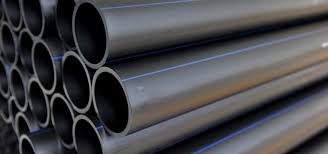Dec . 03, 2024 18:26 Back to list
hdpe pipe sizes and dimensions manufacturers
Understanding HDPE Pipe Sizes and Dimensions
High-Density Polyethylene (HDPE) pipes have gained immense popularity across various industries due to their durability, flexibility, and resistance to corrosion. These pipes are significant for applications in water supply systems, gas distribution, sewage and drainage, and many other sectors. One of the critical factors contributing to their versatility is the wide range of sizes and dimensions available, which allows engineers and manufacturers to select the most suitable type for specific applications.
Overview of HDPE Pipes
HDPE pipes are made from high-density polyethylene, which provides them with excellent strength-to-density properties. They are lightweight yet robust, making them easy to transport and install. Additionally, HDPE pipes are resistant to a myriad of chemical agents and do not corrode, which greatly enhances their longevity compared to traditional materials such as metal or concrete.
Standard Sizes and Dimensions
HDPE pipes are classified based on their pressure rating, the standard size, and the wall thickness. The sizes typically range from 1/2 inch to 63 inches in diameter, with specific pressure ratings designated by the SDR (Standard Dimension Ratio). SDR is a crucial parameter that defines the ratio of the pipe's diameter to its wall thickness.
For residential and commercial applications, you might find commonly used sizes of HDPE pipes such as
- 2-inch (50 mm) - 4-inch (100 mm) - 6-inch (150 mm) - 8-inch (200 mm) - 10-inch (250 mm) and more.
The most commonly used SDRs for these diameters are SDR 11, SDR 13
.5, and SDR 17, primarily depending on the pressure needs of the system in which they are used.Factors Influencing the Selection of HDPE Pipe Sizes
hdpe pipe sizes and dimensions manufacturers

When selecting HDPE pipe sizes, several factors come into play
1. Application Requirements Understanding the purpose of the pipe—whether for water distribution, sewerage, or industrial applications—will guide the selection process. For example, a water supply line may require a different pipe size than a drainage system.
2. Flow Capacity The pipe diameter will directly affect the flow capacity in any plumbing or irrigation system. Larger diameters enable higher flow rates, which are essential for certain industrial applications.
3. Pressure Ratings Different applications will impose various pressure requirements on the pipes. Choose a pipe with an appropriate SDR that can withstand the expected pressure without risk of failure.
4. Installation Conditions Consideration must also be given to how and where the pipes will be installed. In areas with limited space, smaller pipe sizes or flexible HDPE pipes may be preferred to facilitate easier installation.
5. Cost Efficiency While larger pipes might provide ample flow capacity, they can also be more expensive. It's essential to strike a balance between performance requirements and budget.
Manufacturers and Availability
Many manufacturers produce HDPE pipes, each offering a variety of sizes and dimensions. Companies often provide detailed specifications, including weight per unit length, internal diameter, and wall thickness. It's advisable to consult with manufacturers or suppliers to obtain information about the specific HDPE pipe sizes available, as well as their respective applications and performance characteristics.
Conclusion
Understanding HDPE pipe sizes and dimensions is crucial for the successful implementation of any project that involves fluid transport. Choosing the right size entails careful consideration of the application requirements, flow capacity, pressure ratings, installation conditions, and cost consideration. With the increasing demand for HDPE pipes across various industries, manufacturers are constantly innovating, providing a wide range of options to meet diverse needs. As a result, HDPE pipes not only promise efficiency and longevity but also adapt to the ever-evolving demands of modern infrastructure. For any project involving HDPE pipes, thorough planning and consultation with reliable manufacturers will ensure that the right choices are made for optimal performance and reliability.
-
High-Quality PVC Borehole Pipes Durable & Versatile Pipe Solutions
NewsJul.08,2025
-
High-Quality PVC Perforated Pipes for Efficient Drainage Leading Manufacturers & Factories
NewsJul.08,2025
-
High-Quality PVC Borehole Pipes Durable Pipe Solutions by Leading Manufacturer
NewsJul.08,2025
-
High-Quality PVC Borehole Pipes Reliable PVC Pipe Manufacturer Solutions
NewsJul.07,2025
-
High-Quality UPVC Drain Pipes Durable HDPE & Drain Pipe Solutions
NewsJul.07,2025
-
High-Quality Conduit Pipes & HDPE Conduit Fittings Manufacturer Reliable Factory Supply
NewsJul.06,2025

